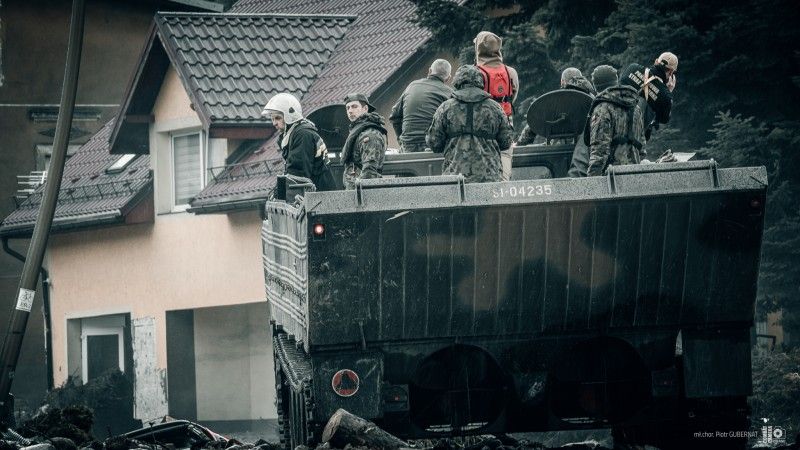Former Head of Military Engineering: It is Important to Maintain Capabilities

Photo. Combat Camera Poland
Military engineering units play a crucial role in establishing the national resilience, and their capabilities must be maintained, which also requires investment in equipment. However, as the situation calms after floods, this type of force has been undergoing cuts, said retired Brigadier General Bogusław Bębenek, former head of military engineering and academic lecturer, in an interview with Defence24.pl.
“It is important that the capabilities built over previous years are maintained. Military engineering forces are the type of troops that are on the front line in very different situations, especially in times of peace and crisis,” the general said.
He recalled that after the “Flood of the Century” in 1997, five engineering rescue battalions were created in Krosno Odrzańskie, Głogów, and Brzeg along the Oder River, where the threat is greatest, as well as in Dęblin and Nisko along the Vistula River. “The system was supposed to be maintained and developed. When the situation stabilized, a decision was made to dissolve these battalions in search of staffing reserves,” he added. “I’m not here to criticize anyone, but to point out the problems,” he emphasized.
After another flood in 2010, the concept of military reconstruction units was proposed, which involved creating 10 such units - not from scratch, but by building capabilities within existing engineering units. “By equipping them with additional specialized equipment, almost every engineering unit formed such task forces, which were conveniently called military reconstruction units. These included specialized elements with high-power generators, high-capacity pumps, and water purification devices; they also included elements formed specifically for rebuilding bridges and roads,” the General said.
Read more
“These units were extensively used in flood-affected areas. These actions, as well as missions in Iraq and Afghanistan, demonstrated that technical modernization must also take into account specialized equipment used in crisis situations by military engineering forces. Between 2008 and 2016, corresponding with NATO’s needs related to countering improvised explosive devices (IEDs), a Mine Disposal Team was established at the Military Engineering and Chemical Training Center in Wrocław. Specialized EOD (Explosive Ordnance Disposal) groups were also formed within the Land Forces, Air Force, Navy, Special Forces, and Military Police,” General recalled.
He pointed out that “2022—hybrid operations and the humanitarian crisis on the eastern border - again demonstrated the key role of military engineering forces in building national resilience to hybrid threats.”
“When it comes to equipment modernization, there are years, like when we talk about a century or millennium flood, when such actions are undertaken. Then, when the situation calms down, priorities shift, and certain projects are postponed,” he said.
The former head of the Military Engineering Department at the General Command of the Armed Forces also addressed the equipment needed by engineers and the necessity of modernizing it. “The PTS amphibious vehicle is very good for this type of operation, but it’s a design from the 1960s. The carrier has been modernized, but it’s equipment that ages quickly, and its service life will soon be exhausted,” he assessed.
Read more
He deemed it essential to undertake research and development work on a new amphibious vehicle capable of moving freely in all terrain, regardless of water depth. “It must be extremely versatile equipment. I would prefer it to be a wheeled vehicle, not a tracked one. I have already proposed this initiative, who knows, given recent events, I might raise it again,” he said.
He added that bridge-laying equipment is needed for a wide range of tasks, from light amphibious equipment to heavy-duty carriers, with a capacity of 30-60 tons and more, depending on the type of combat equipment being transported. He also noted that this year’s floods show what kind of equipment works well. In flood conditions, jet propulsion is primarily needed, not propeller-driven systems, which are often hindered by objects in the water.
“Conclusions must be drawn. I think that after this massive flood we’re experiencing now, there will be time for reflection, lessons to be learned, and we should also benefit from the experiences of those who were involved in crisis management in previous years,” General Bębenek believes.





